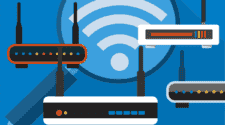A weak Wi-Fi signal is like the ultimate buzzkill in the digital age. It’s that annoying moment when your favorite show starts buffering right at the best part or your online game freezes just as you’re about to win. Frustrating, right? Don’t worry; this guide (via) has your back. We’ll break down some easy, affordable tips to boost your WiFi signal so you can stream, game, and browse without a hitch. Let’s get you back to smooth, no-stress surfing in no time!
Simple and Easy Tips for Improving Wi-Fi Signal Coverage
There are simple and effective ways to boost your Wi-Fi signal, and the best part is that you don’t need any technical expertise to do it. A weak signal can be frustrating, whether you’re streaming videos, playing online games, working remotely, or just browsing the web. Luckily, a few adjustments can make a big difference in your internet experience.
The tips below will help you understand how Wi-Fi works, identify common signal issues, and apply easy fixes to improve your connection. Whether you’re struggling with dead zones, slow speeds, frequent disconnections, or lag during video calls, this guide will walk you through seven practical solutions.
So, if your Wi-Fi keeps dropping or you want a stronger and more reliable connection, you’re in the right place. Let’s get started with these seven easy ways to improve your Wi-Fi performance today!








